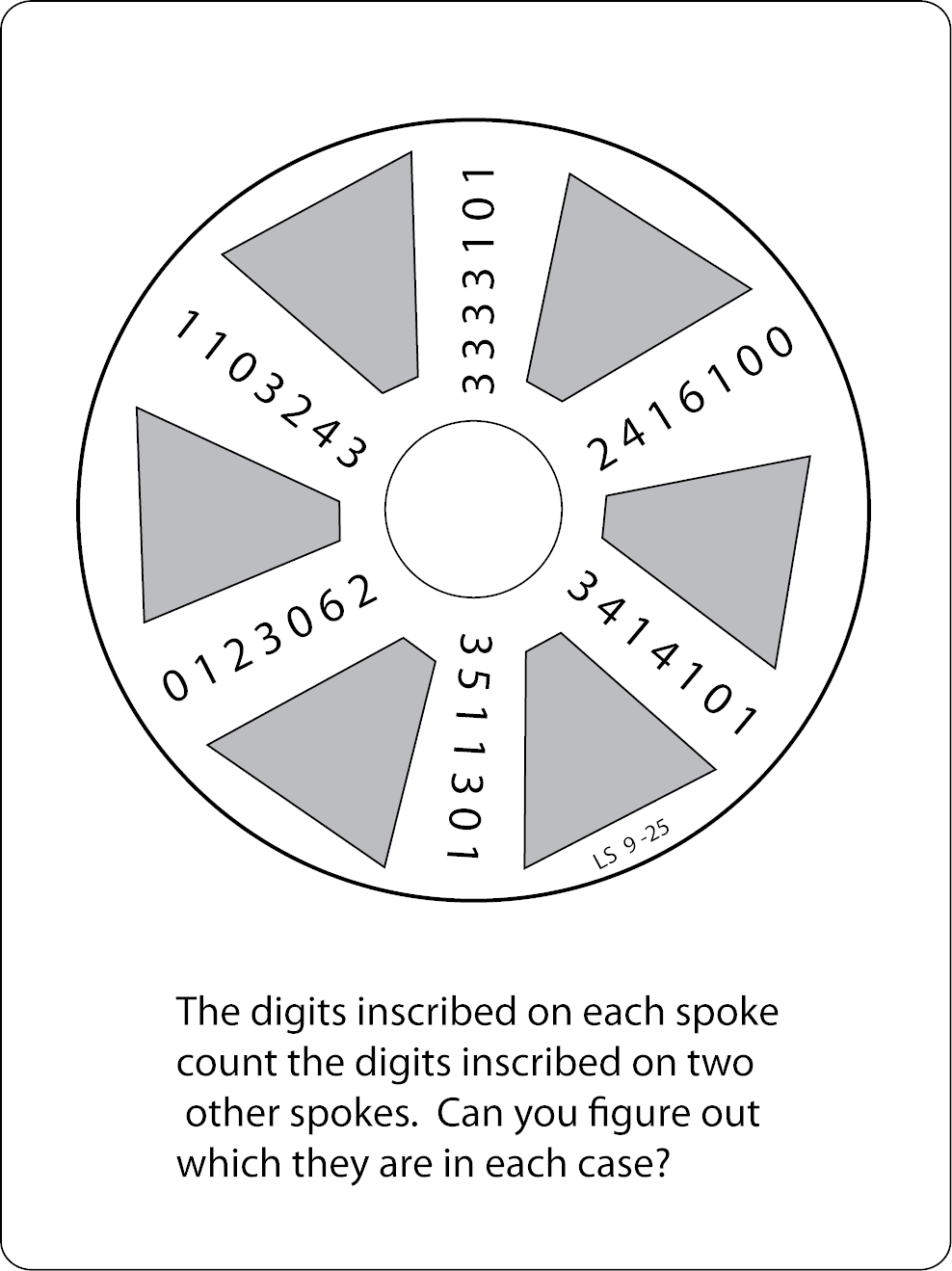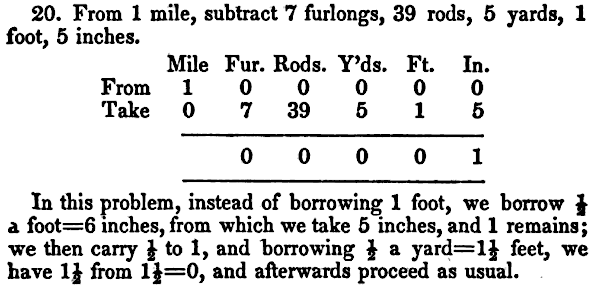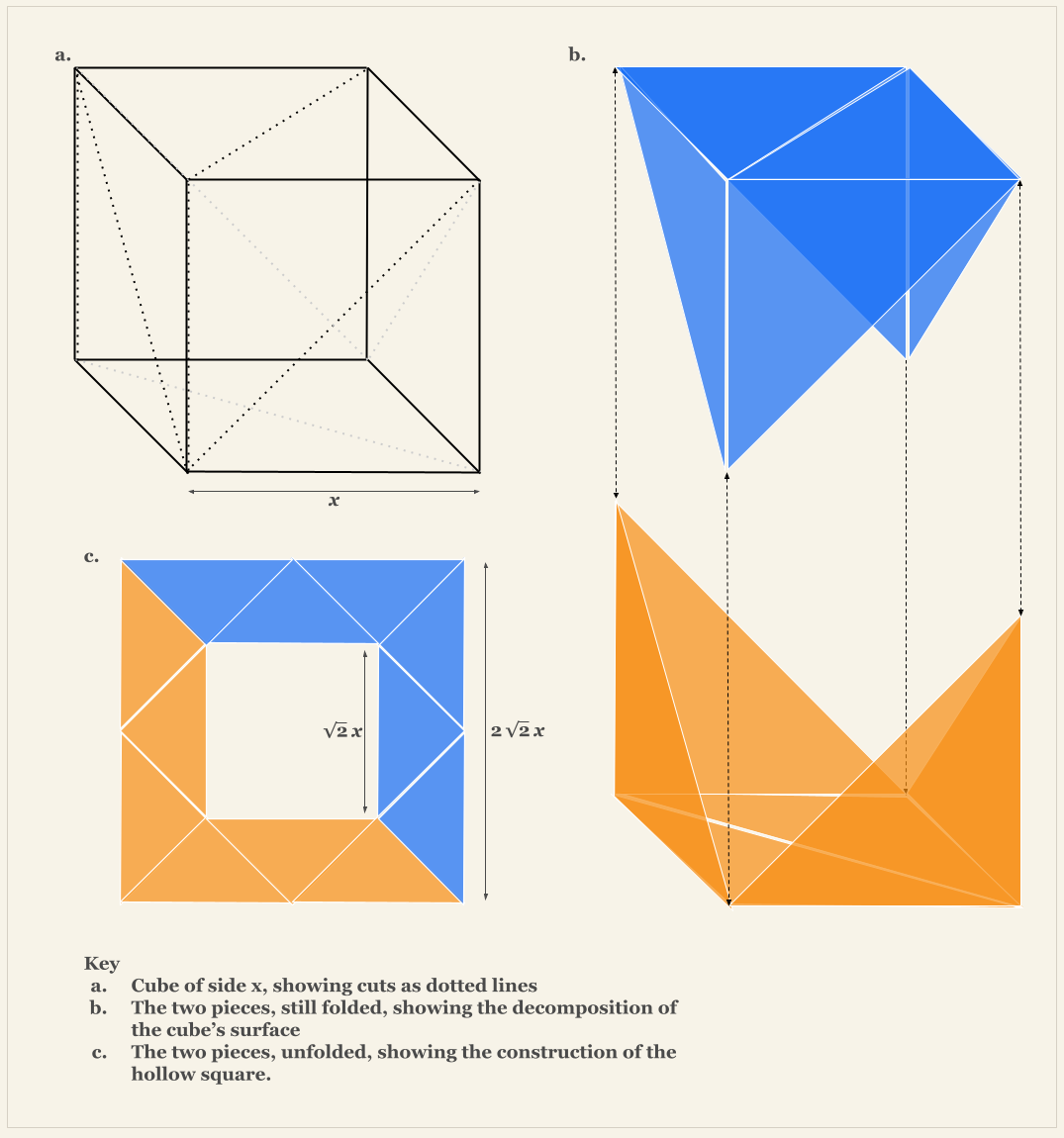Author: Greg Ross
“Narrow Escape of a Mouse”
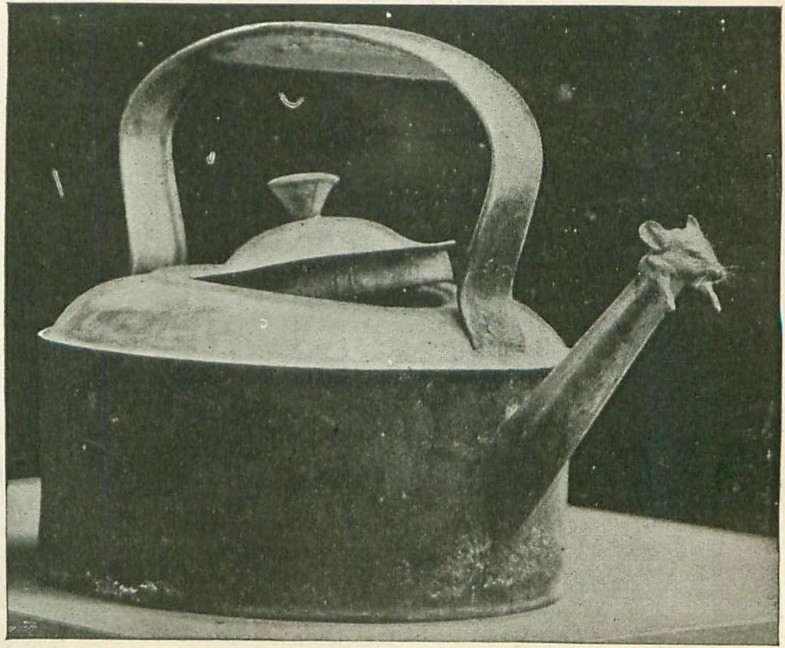
Mr. Chas. Hy. Heskins, of 94, Blenheim Road, Reading, was good enough to send in this extremely curious and interesting photo. The kettle, it seems, was a disused one, and stood for a long time on a shelf with the lid partly off, much as we see in the photo. One night the mouse got in, possibly in the hope of finding some stray crusts. Why the little animal should take it into his head to leave the inhospitable kettle by the spout is not known, but he did, with the result portrayed in the photo. His head got through all right, and two pathetic little paws; but ‘the force of Nature could no farther go,’ and poor mousie stuck fast. Next morning someone took the kettle in hand, and ‘assisted’ the mouse’s hindquarters with a stick of wood, with the result that he emerged slowly and stiffly, and was finally allowed to hobble painfully away. Truly, a narrow escape in more senses than one!
— Strand, July 1897
Education
Number Theory
What’s the funniest number? Yale physicist Emily Pottebaum proposed the Perceived Specificity Hypothesis, which states that “for nonnegative integers < 100, the funniness of a number increases with its apparent precision." She surveyed 68 acquaintances and found that:
- Among integers divisible by 10, 0 is funniest.
- Odd numbers are consistently funnier than even.
- “Furthermore, the most oddly specific numbers — odd numbers with a degree of specificity of 2 — are the most funny, according to the data presented here.”
The degree of specificity characterizes the distance between an integer and the nearest multiple of 5:
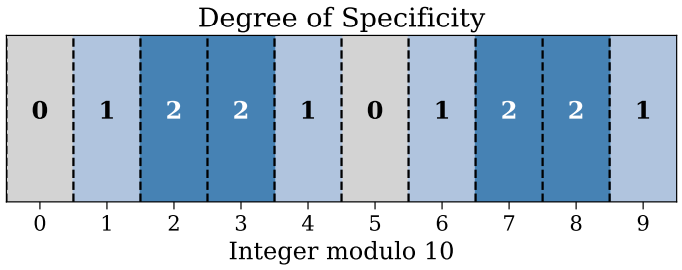
So 3, 7, 13, 17, etc. were judged to be funniest.
“I acknowledge my Ph.D. advisor, who I shall not name out of respect for her academic integrity, for her exasperation upon learning about this study. I thank her for putting up with my antics and plead that she continue to do so until I graduate.”
(E.G. Pottebaum, “What Is the Funniest Number? An Investigation of Numerical Humor,” arXiv preprint, arXiv:2503.24175 [2025].)
Watch Your Step

Artist Edgar Müller created this illusion at an open-cast tuff mine in 2015. The rock is real; the pit is an anamorphic painting.
Late Word

A week after songwriter Jim Croce died in a plane crash in 1973, his wife, Ingrid Jacobson, received this letter:
Dear Ing,
I know I haven’t been very nice to you for some time, but I thought it might be of some comfort, Sweet Thing, to understand that you haven’t been the only recipient of JC’s manipulations. But since you can’t hear me and can’t see me, I can’t bullshit, using my sneaky logic and facial movements. I have to write it all down instead, which is lots more permanent. So it can be re-read instead of re-membered, so, it’s really right on the line.
I know that you see me for who I am, or should I say, as who I are. ‘Cause I’ve been lots of people. If Medusa had personalities or attitudes instead of snakes for her features, her name would have been Jim Croce. But that’s unfair to you and it’s also unhealthy for me. And I now want to be the oldest man around, a man with a face full of wrinkles and lots of wisdom.
So this is a birth note, Baby. And when I get back everything will be different. We’re gonna have a life together, Ing, I promise. I’m gonna concentrate on my health. I’m gonna become a public hermit. I’m gonna get my Master’s Degree. I’m gonna write short stories and movie scripts. Who knows, I might even get a tan.
Give a kiss to my little man and tell him Daddy loves him.Remember, it’s the first sixty years that count and I’ve got 30 to go.
I Love you,
Jim
(From Ingrid’s 2012 memoir, I Got a Name: The Jim Croce Story.)
Piecework
In the Spring 1957 issue of Pi Mu Epsilon Journal, C.W. Trigg points out that, by two continuous cuts, the surface of a cube can be divided into two pieces that can be unfolded and assembled into a hollow square:
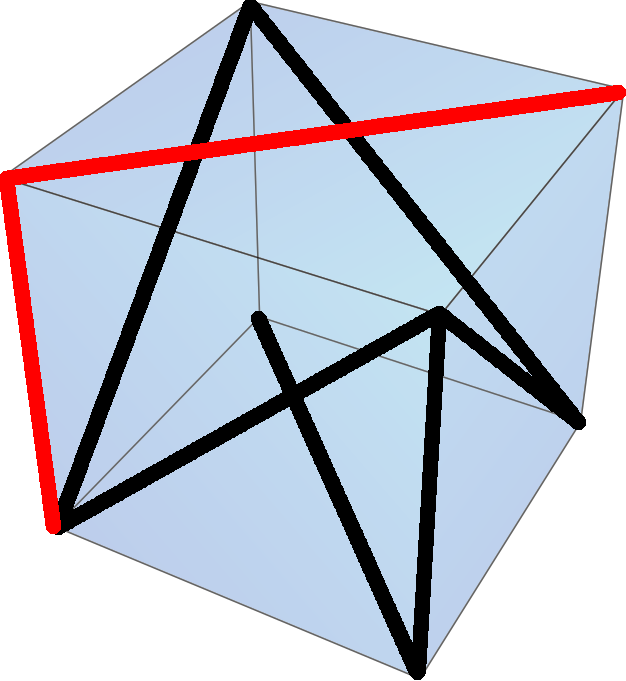
The cuts divide the cube’s surface into two congruent pieces, each composed of six connected isosceles right triangles. Joining these two pieces forms a hollow square with exterior side and interior side
, where x is the length of the cube’s edge.
10/10/2025 UPDATE: Reader Nick Hare made a much, much, much, much better diagram:
(Thanks, Nick.)
“A Reading in Unlove”
This poem is widely purported to have been written by a 15-year-old boy two years before he ended his life:
Once on a yellow paper with green lines
he wrote a poem
and he called it “chops” because that
was the name of his dog
and that’s what it was all about
and his teacher gave him an “A” and
a gold star
and his mother hung it on the kitchen door
and read it to all his aunties
that was the year father tracy took
all the kids to the zoo and let them
sing on the bus
and that was the year his baby sister
was born with tiny toenails and no hair
and his mother and father kissed a lot
and the girl around the corner sent
him a valentine signed with a row of x’s
and his father always tucked him
in bed at night
and was always there to do it.
Once on a white paper with green lines
he wrote a poem
and he called it “autumn” because
that was the name of the season
and that’s what it was all about
and his teacher gave him an “A” and
told him to write more clearly
and his mother never hung it on
the kitchen door because it had just
been painted
and the other kids told him that
father tracy smoked cigars and left
the butts in the pews
and that was the year his sister got glasses
with thick lenses and black frames
and the girl around the corner laughed
at him when he went to see Santa Claus
at Macy’s
and the kids told him why his
mother and father kissed a lot
and his father never tucked him in
bed at night and he got mad when
he got mad and cried for him to do it.
Once on a paper torn from his notebook
he wrote a poem
and he called it “question marked
innocense” because that was the name
of his girl
and his professor gave him an “A” and
a strange and steady look
and his mother never hung it on
the kitchen door because he never
showed it to her
that was the year father tracy died
and he forgot how the end of the
“apostles creed” went
and he caught his sister necking on
the back porch
and his mother and father never
kissed anymore or even talked
and the girl around the corner
wore too much makeup and made
him cough when he kissed her, but he
kissed her anyway
and at 3 a.m. he tucked himself in bed,
his father snoring soundly.
That’s why on the back of a pack of
matches he wrote another poem
and he called it “absolutely nothing”
because that’s what it was about
and he gave himself an “A”
and a slash on each damp wrist
and he hung it on the bathroom door
because he couldn’t reach the kitchen.
The earliest publication I can find attributes it to a Cathy Curtis, a 12-year-old student at the Abbot Academy, a girls’ boarding school in Andover, Mass., whose literary magazine published the poem in June 1971. The school closed the following year. I haven’t been able to learn anything more about Curtis.
10/07/2025 UPDATE: Intrepid reader Adam Mellion has made a much, much deeper research effort than I did and found that the author appears to be Earl Reum (1931-2010), a teacher and motivational speaker who worked in the Denver, Colo., school system in the 1950s.
Adam’s sources include a blog post by Genel Hodges, executive director of the National Association of Workshop Directors, who knew Reum, and the transcript of an interview with Stephen Chbosky, author of The Perks of Being a Wallflower and director of the film of the same name, in both of which the poem appears, and who managed to speak with Reum. Separately, writer Donald Gallo recounts his own effort to identify the poet in the article “A Different Kind Of Whodunit: The Search for a Poem’s Author,” which appeared in the April 2000 issue of Voice of Youth Advocates. He too concluded that Reum is the author:
Earl Reum says he wrote the first version in 1954 shortly after a student with whom he was very close attempted suicide during Reum’s first month of teaching at Merrill Junior High School in Denver, Colorado. ‘I was devastated,’ Reum says. ‘I never truly recovered from the experience.’
At that time, the Student Activities Office of the Denver Public Schools produced a series of booklets containing what Reum calls ‘Teacher-Advisor Stuff’ — without titles and without author credit. As a student council advisor, Reum submitted his poem. The ‘A PERSON/A PAPER/A PROMISE’ title was added when Reum became the Activities Coordinator for the Denver Schools in 1960, and approximately two thousand copies of those booklets were sent to activities directors throughout the nation, thus accounting for the poem’s widespread distribution.
Gallo adds, “The poem, Reum says, ‘has changed and changed … grown and gotten used, augmented and has had parts deleted.’ But he says this with joy rather than regret. He has never been bothered by the changes nor by other people claiming authorship. ‘The ultimate compliment,’ he says, ‘is when people take your stuff and sign their names. It makes the world a bit smaller and more intimate.'”
A million thanks to Adam for sorting all this out — there are now so many conflicting attributions, and so many versions of the poem, that it’s very hard to determine its origins. This seems pretty conclusive.
Five-Sided Story

In a regular pentagon, all diagonals are drawn, as shown. Label each vertex of the pentagon and each intersection of the diagonals with the number 1. Now: In one step you can change the signs of all the numbers on a side or on a diagonal. Is it possible, by a sequence of such steps, to convert all the labels in the diagram to -1?
Double or Nothing
Carrying two brown satchels, one filled with $777,000 in $100 bills and the other empty, an unidentified man, dressed in jeans and cowboy boots, walked into Binion’s Horseshoe Casino in Las Vegas last week. He exchanged his money for $500 chips, strode to the craps table and put all of the chips on the back line, which meant that he was betting against the woman who happened to be rolling the dice. She first threw a six, then a nine and finally a seven. Said the dealer: ‘Pay the back line.’ The man scooped up his chips, traded them at the casino cage for $1,554,000 in cash and shook hands with Jack Binion, the stunned president of the casino. Said Binion: ‘It was the biggest bet in a gambling house that I have ever heard of.’ As the man walked out of the casino with his two brown satchels, both now stuffed with $100 bills, and climbed into his car, he told Binion: ‘You know, this damned inflation was just eroding this money. I figured I might as well double it or lose it.’ With that, he drove off into the night, still unidentified.
— Time, Oct. 6, 1980
10/10/2025 UPDATE: The gambler was later identified. (Thanks, Patrick.)

